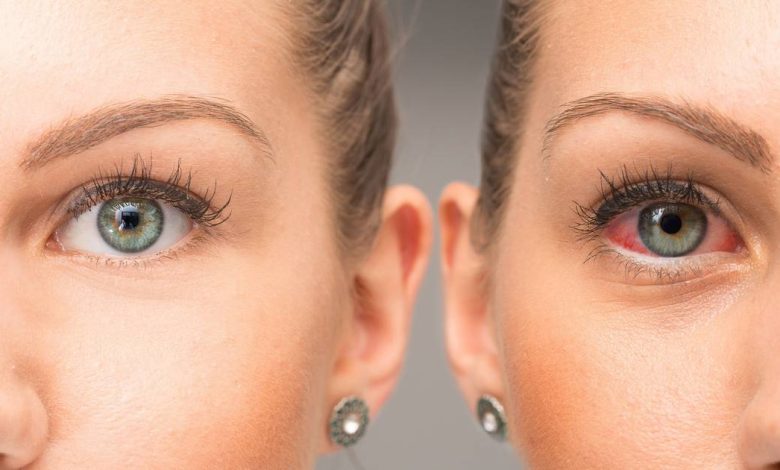Watery eyes (epiphora, lacrimation): What's it, causes, symptoms, diagnostics, treatment, prevention

Watery eyes; Epiphora; Tearing – increased
What are watery eyes?
Watery eyes, also known as epiphora, is an eye condition, characterized by excessive production of tears. This usually happens, when the eyes become overly sensitive to irritants, causing the lacrimal glands to produce more tears, than necessary. When the eyes get too watery, it can cause irritation and discomfort. Depending on the severity of the condition, it can even interfere with vision..
What causes tearing?
There are many potential causes of tearing. Some common reasons include:
- mold allergy, dandruff, dust
- .Aloe (swelling around the edge of the eyelid)
- Blockage of the tear duct
- Conjunctivitis
- Smog or chemicals in the air or in the wind
- Bright light
- Eyelid turns in or out
- Something got in your eyes (eg, dust or sand)
- Scratch on the eye
- Infection
- Eyelashes, growing inwards
- Irritation
Increased tearing can sometimes cause:
- Eyestrain
- Laughter
- Vomiting
- Zevota
One of the most common causes of excessive tearing is dry eyes. . Dryness causes eye discomfort, what stimulates the production of tears. One of the main tests for tearing is to check, are your eyes too dry.
Watery eye symptoms
The main symptom of lacrimation is the excessive production of tears.. Other symptoms may include:
- Red eyes.
- Itching and burning around the eyes
- Discharge from the eyes
- Sensitivity to light or wind
When to see a doctor
It is important to see a doctor, if the symptoms do not disappear within a few days and become more unpleasant. Besides, if symptoms occur more frequently, it is important to seek medical attention. Potential complications should also be taken into account., associated with lacrimation. They may include:
- Loss of sight
- The scars of the cornea
- Infection
- Damage to the eye
- Inflammation of the eye or conjunctiva.
Questions, that your doctor may ask
When meeting with your doctor, he may ask you the following questions::
- When did the disease start??
- What other symptoms, if any, you have?
- What medications do you take?
- Has anyone in your family experienced this condition??
- Do you have allergies?
Diagnosis of watery eyes
Your doctor will start with a physical exam and take a close look at your eyes., asking you questions, to determine the cause of lacrimation. Other diagnostic tests, which can be recommended, include:
- Slit lamp examination. Specialized microscope for examination of the anterior segment of the eye.
- Evaluation of salivary products. A dye is used to measure tear production..
- Allergy test. Skin or blood test to determine the allergen.
- Topography of the cornea. Evaluation of the shape of the cornea.
- Lacrimal duct ultrasound. To determine the blockage of the tear ducts.
Treatment for watery eyes
Treatment for tearing depends on the underlying cause. Treatment options may include:
- Allergy treatment. This may include the use of antihistamines to relieve allergy symptoms., such as runny nose, sneezing, itching and tearing.
- Eye drops. Eye drops, over-the-counter or prescription, can be used to reduce inflammation and reduce tearing symptoms.
- Operation: surgery may be needed to treat blocked tear ducts or tear glands.
- Medicines, prescription. In more severe cases, medications may be prescribed., prescription, to reduce the symptoms of tearing.
Home treatment for watery eyes
There are a few simple steps, things you can do at home, to reduce the symptoms of tearing.
- Avoid irritants. If you are allergic, avoid contact with such allergens, like pollen and dust.
- Do not rub your eyes. Rubbing the eyes can worsen the condition and cause further irritation..
- Wear sunglasses. Sunglasses help protect your eyes from the sun and external irritants..
- Use lubricating eye drops. Lubricating eye drops help prevent dry or irritated eyes.
- Wash your hands often. To reduce the risk of infection, wash your hands often and avoid touching your eyes.
Preventing watery eyes
To reduce the risk of developing lacrimation, the following preventive measures can be taken:
- Avoid Allergens. If you are allergic, reduce exposure to allergens, such as pollen and dust.
- Keep Your Eyes Healthy. Be sure to protect your eyes, following a healthy diet, avoiding smoking and wearing safety goggles while exercising.
- Deal with stress. Stress can trigger tearing, so be sure to take anti-stress activities, such as yoga or meditation.
- Take a break from the screens. Take regular breaks from TV screens, computer monitors and mobile devices.
Used sources and literature
Borooah S, Tint NL. The visual system. In: Innes JA, Dover AR, Fairhurst K, eds. Macleod’s Clinical Examination. 14th ed. Philadelphia, PA: Elsevier; 2018:chap 8.
Olitsky SE, Marsh JD. Disorders of the lacrimal system. In: Kliegman RM, St. Geme JW, Bloom NJ, Shah SS, Tasker RC, Wilson KM, eds. Nelson Textbook of Pediatrics. 21st ed. Philadelphia, PA: Elsevier; 2020:chap 643.
Örge FH. Examination and common problems in the neonatal eye. In: Martin RJ, Fanaroff AA, Walsh MC, eds. Fanaroff and Martin’s Neonatal-Perinatal Medicine. 11th ed. Philadelphia, PA: Elsevier; 2020:chap 95.
Seller RH, Symons AB. Vision problems and other common eye problems. In: Seller RH, Symons AB, eds. Differential Diagnosis of Common Complaints. 7th ed. Philadelphia, PA: Elsevier; 2018:chap 34.
